mattighofen is a small rural community in upper austria, not too far away from where i was born & grew up. it seems surprisingly remote, given how densely populated austria is on the whole, and it isn’t really connected to any of the main arteries that cross the country. arriving there, it appears no more remarkable than any of the towns you pass through on the way, except maybe for the significant number of large industrial buildings that all bear one name: ktm.

the original founders (the company was established in 1953) have little to do with the company today. that has to do with the fact that the original company declared bankruptcy in 1991, and split off some of what was considered non-core at the time, e.g. the manufacture of bicycles and other vehicle components (some of those were later re-incorporated into the company), and 25 years later the brand had become europe’s biggest bike manufacturer.

on the way it had acquired some other (struggling) brands, like the dutch suspension manufacturer wp (i believe the original name was somewhat controversially ‘white power’), husaberg, husqvarna and as of fairly recently, gas gas.
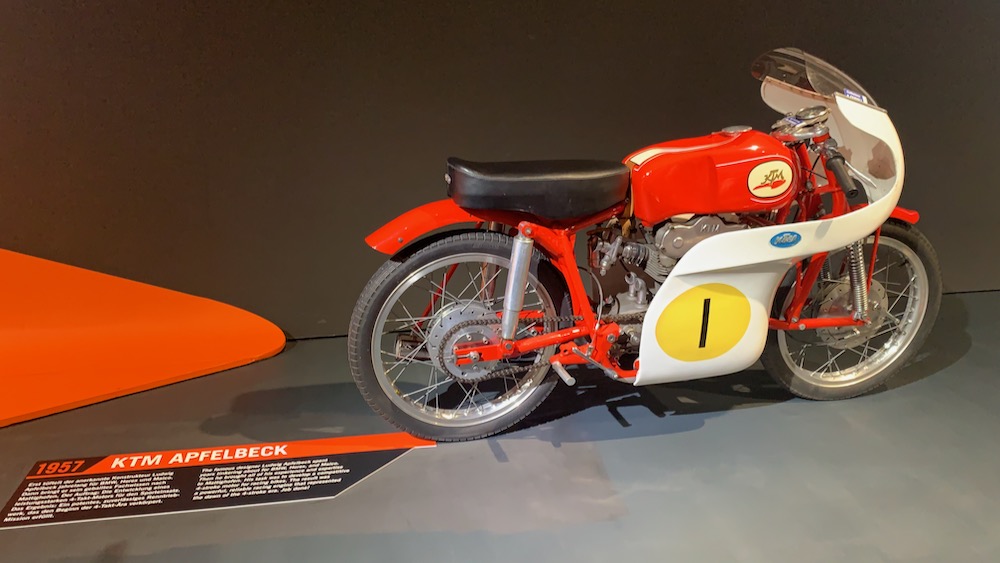
it is, as always, difficult to point to what exactly might have been behind this remarkable recovery. it has always been difficult for european motorcycle manufacturers to compete with the massive brands from asia, initially from japan (anyone heard of honda, yamaha, suzuki or kawasaki?) and now increasingly from china as well. maybe the large minority stake bajaj (an indian brand) has taken in ktm many years ago isolates the brand from that threat, and offers a natural off-shoring base – e.g. the duke series is manufactured in india already.
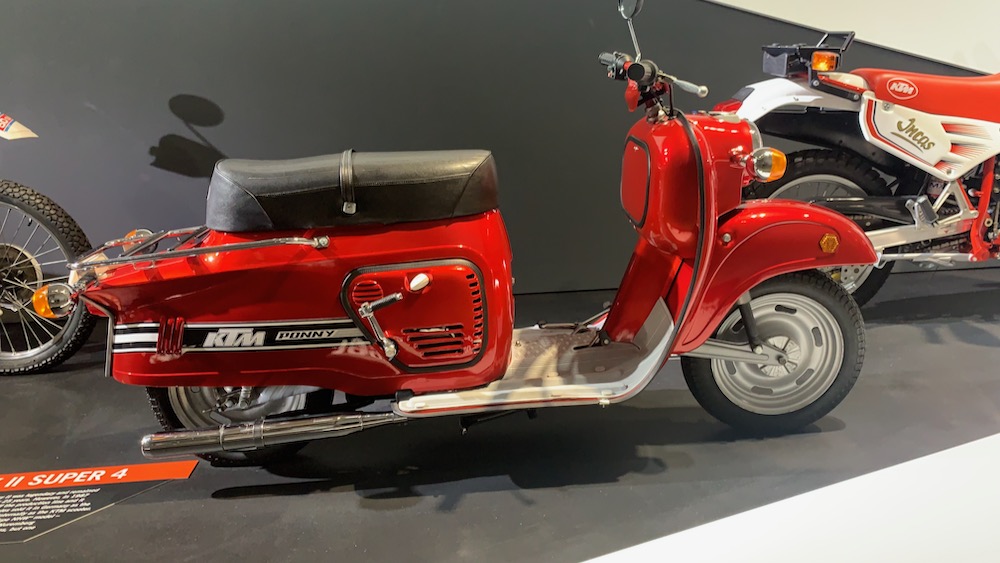
the focus on ‘race ready’ bikes that offer fairly uncompromising off-rod racing technology to the market certainly played a role in the brand’s ascent, and the stand out designs by another small austrian company, kiska, has helped the bikes develop its characteristic look. the ‘ponny’ model in the photo above was clearly a pre-kiska design, as you probably guessed; it brings back memories because i spent quite a bit of time early in my riding career on one of these. i never owned one, but a boy who lived in the neighbourhood and went to the same school had one, and i was allowed to drive it on occasions. i still remember the clutch as being very difficult, and obviously it was nowhere near as sexy as a vespa.

that said, i still remember a time when turning up to a ride on an orange bike got me more snide remarks than admiration, especially in australia, where japanese bikes still used to have a large following (and the reputation of reliability), but thanks to racing successes in all parts of the world and the domination of really all off-road competitions have slowly turned this around, and in recent years in particular the two-stroke models have gained a massive following, which is surprising given they almost disappeared years ago.
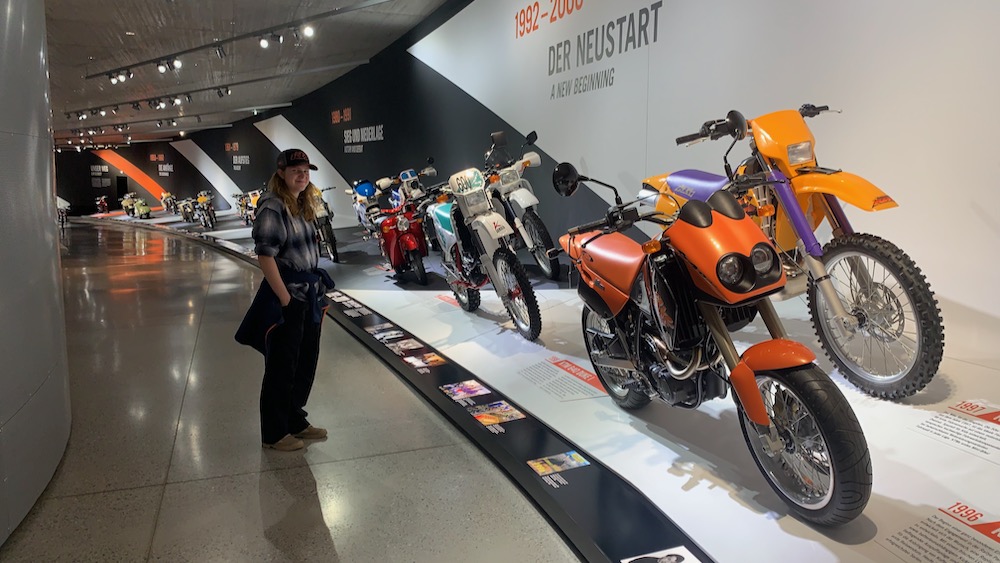
regarding orange: my first ktm was actually not orange, it was blue and mint, one of the bikes that already had the lc4 engine (based on the husaberg motor; apparently one of the reasons the brand was acquired by ktm was to get their hands on that powerful light-weight four stroke engine), however, the next model was one of the first that established the now natural ktm colour scheme – it’s the first one on the right (although technically i think that particular exhibit is actually a 360 two stroke, but it looks the same as the 620 four stroke).

which brings us back to mattighofen and the ktm motohall, ktm’s monument to itself. the motohall is not uncontroversial in austria: while few would argue against an austrian make dominating almost every off-road race series (and recently doing quite well in motogp, too), the fact that ktm apparently needed multi-million euro support from the upper austrian state and the austrian federal governments to build the exhibit, despite being wildly successful, profitable and having made its principal owner a very rich man, wasn’t universally applauded. the fact that he was (still is) very close to austria’s conservative government, which may have helped access favourable conditions did not help the controversy.
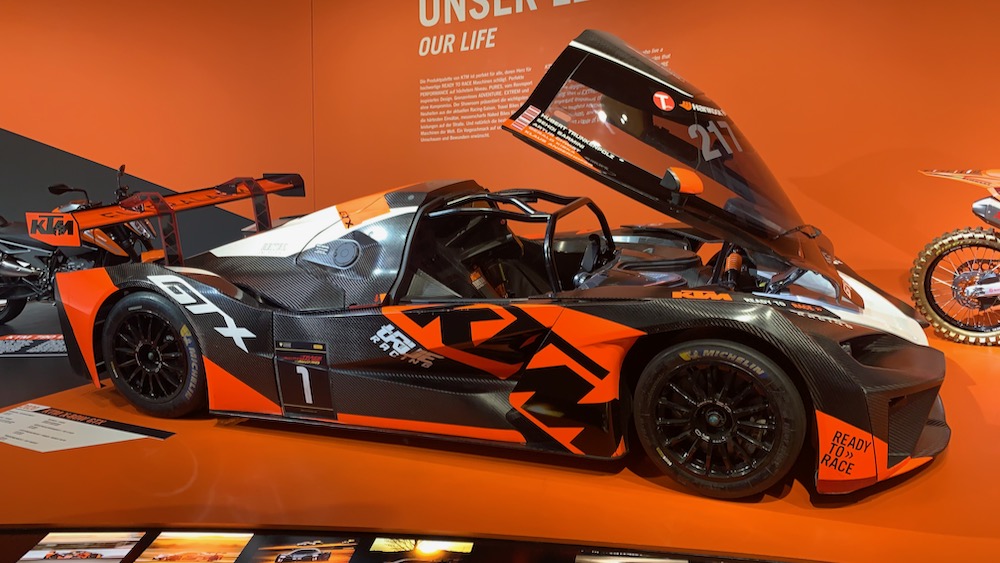
that said the motohall nicely traces the development of the brand from somewhat humble post-war beginnings to the incredible powerhouse it is today. yes, the car in the photo above is also a ktm, it’s called x-bow. i’m unsure why it was made, if it is still available for purchase, and what one would do if one had such a thing in the garage, but it looks pretty good.

somehow it feels like lately progress on the dirt bike front is gradual rather than revolutionary: the most recent ‘hard enduro’ (think erzberg rodeo) bike feels very close to my last ktm, but i’m sure under the skin are many useful improvements, including the poly rear section, which is apparently much less prone to damage.

i’m less at peace with the latest crop of adventure bikes. they appear to include more technology (abs, traction control, active suspension, multiple maps for the engines) than a space shuttle (that’s not hard, i believe any smart phone could outthink a space shuttle), and there seems to be rather a lot of weight on those bones.
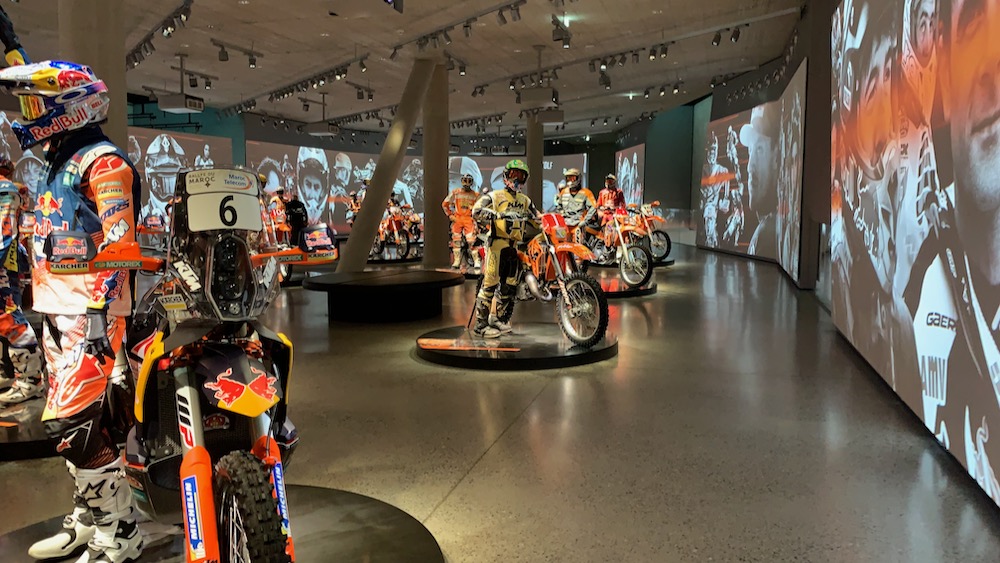
however, the success appears to support the direction the company is taking. my heart, however, still lies with the many racing models that have accumulated an incredible number of race and series wins over the years. i can still recall some of these names, and sat on quite a few of those bikes over the years.
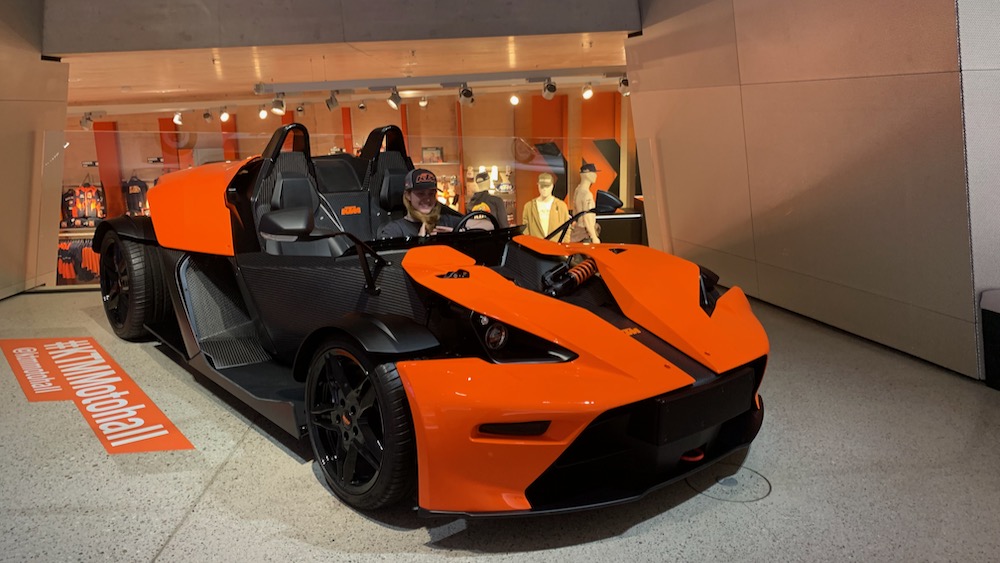
in the end we had to cut the visit a bit shorter than certainly natalie would have wanted. so many bikes to look at, sit on (and a x-bow to sit in), not to mention the obligatory shop at the exit – sorry, we didn’t buy anything, but that may be due to the fact that nat already arrived properly branded.
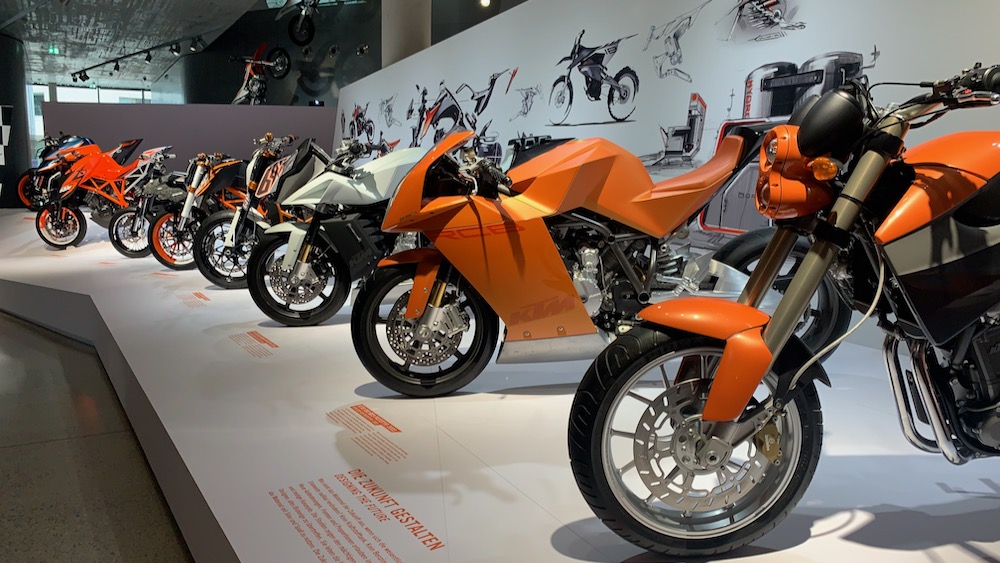
was it worth the trip? i’d say so, at least if you are into bikes, and definitely if you have a soft spot for ktm, which i still do, despite the fact that i no longer own one. of course, natalie does, and in a way my mille is also related: before they started designing their own engines ktm used rotax power plants, just like the rsv. natalie also enjoyed the many ways to gain insight into how the various components work: the engine, the cooling system, the suspension, the frames. she also commented that she’d have to go back to the porsche museum to compare the two.
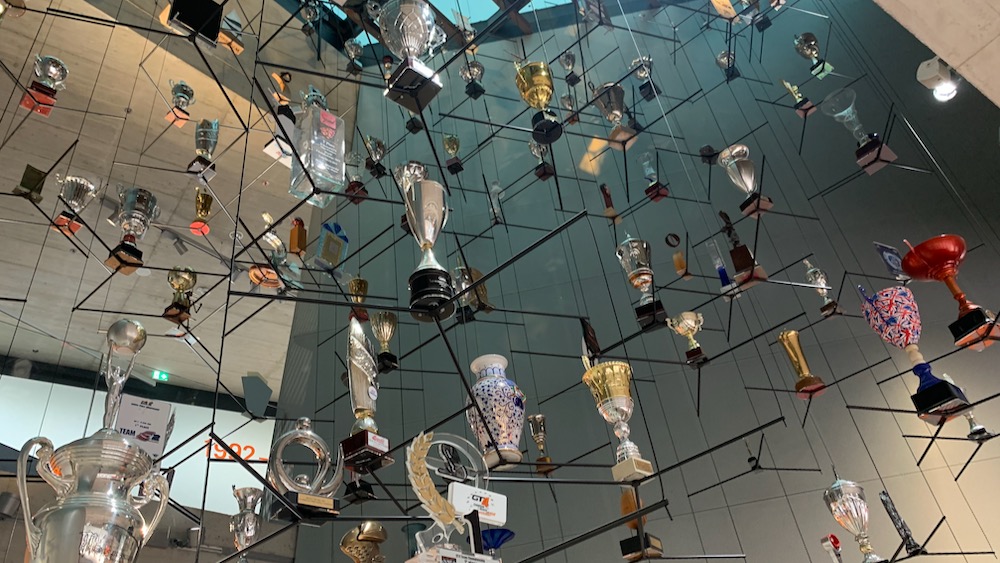
overall we enjoyed the experience, and possibly also the longish drive from linz (who knew anything in upper austria could be an hour and a half away from linz. the entry fee is modest, maybe thanks to the generous support by the austrian government …
